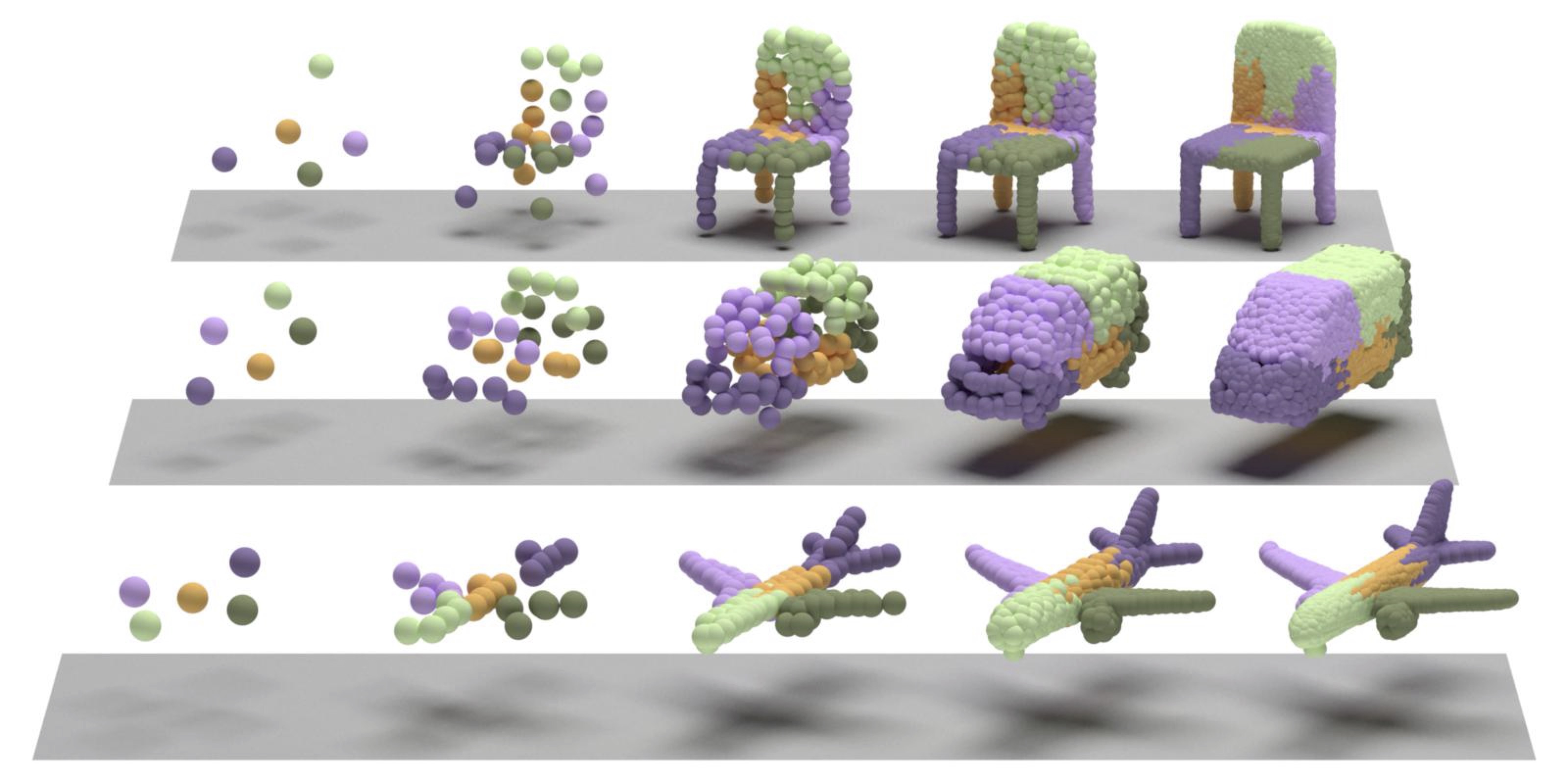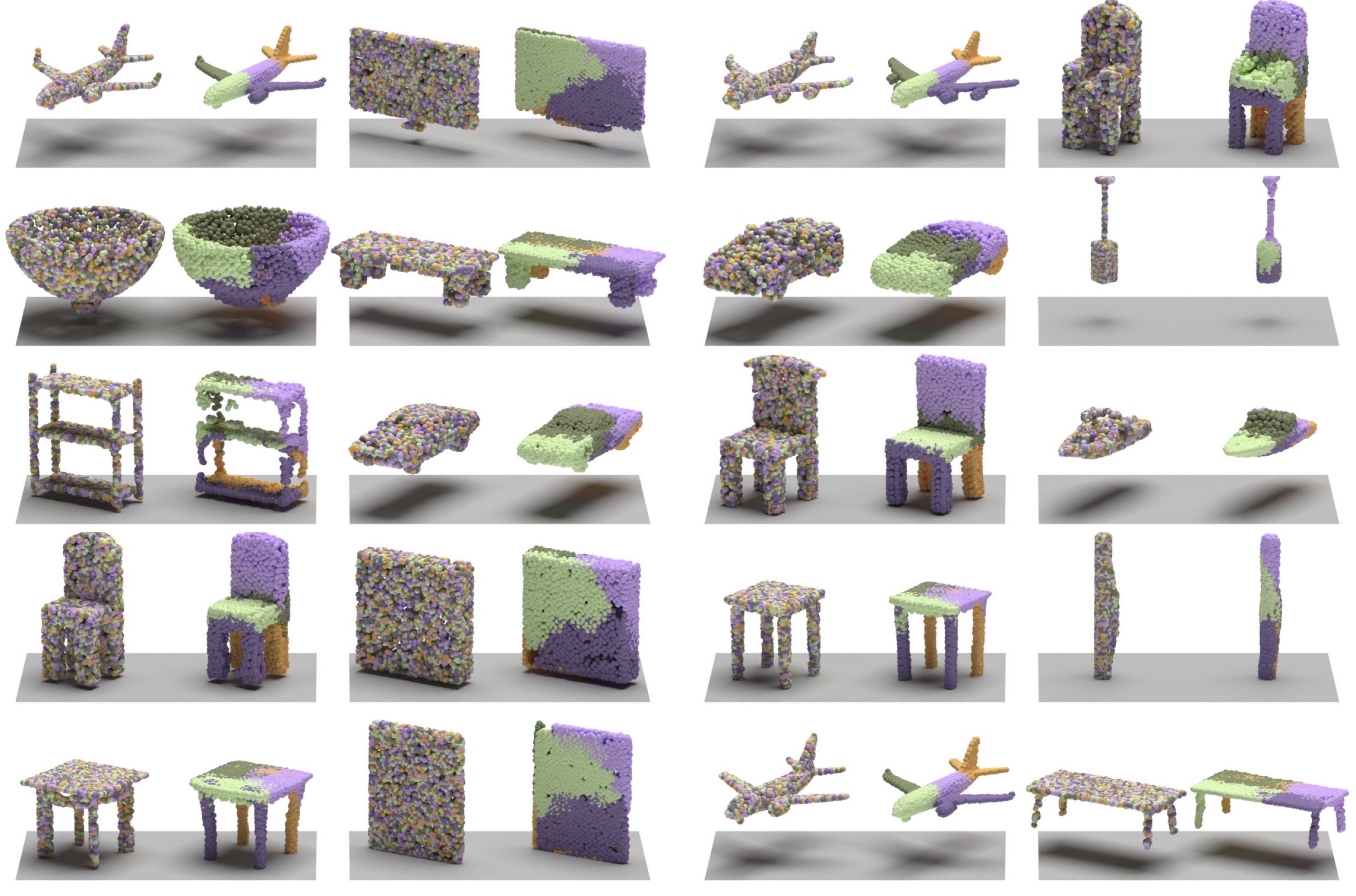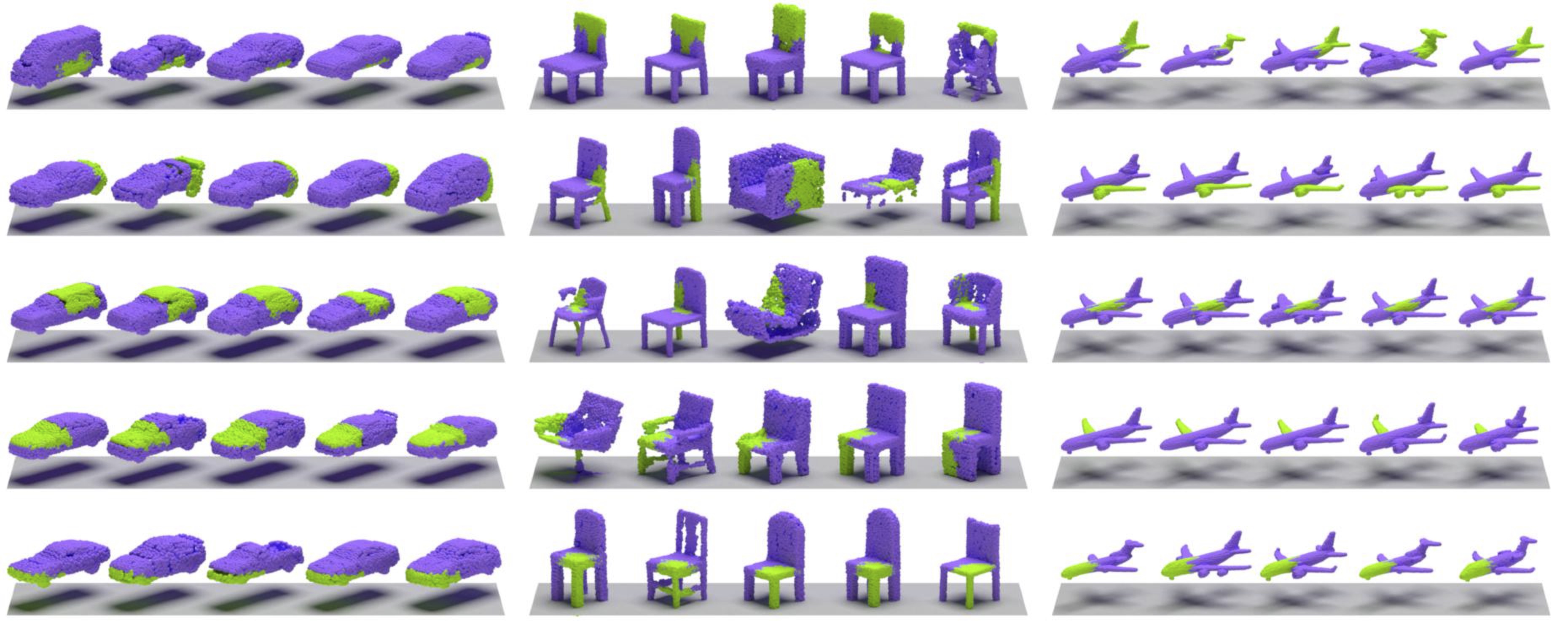
Abstract
In this paper we propose a novel point cloud generator that is able to reconstruct and generate 3D point clouds composed of semantic parts. Given a latent representation of the target 3D model, the generation starts from a single point and gets expanded recursively to produce the high-resolution point cloud via a sequence of point expansion stages. During the recursive procedure of generation, we not only obtain the coarse-to-fine point clouds for the target 3D model from every expansion stage, but also unsupervisedly discover the semantic segmentation of the target model according to the hierarchical/parent-child relation between the points across expansion stages. Moreover, the expansion modules and other elements used in our recursive generator are mostly sharing weights thus making the overall framework light and efficient. Extensive experiments are conducted to demonstrate that our proposed point cloud generator has comparable or even superior performance on both generation and reconstruction tasks in comparison to various baselines, as well as provides the consistent co-segmentation among 3D instances of the same object class.





